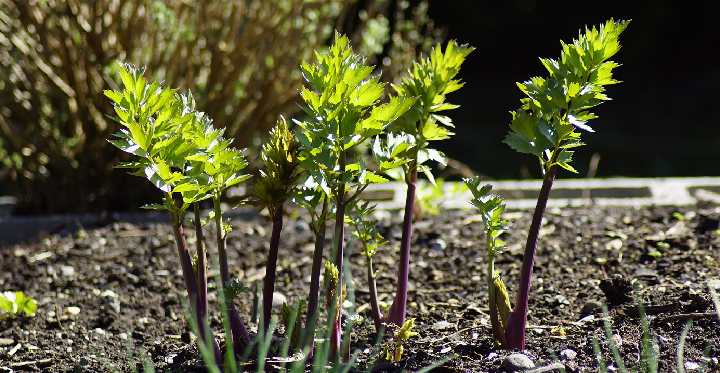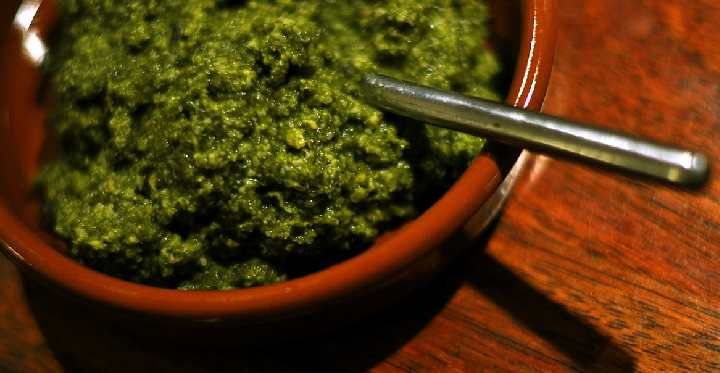How to Grow Lovage Like a Pro and Use It Like a Chef

Lovage (Levisticum officinale) is the bold, versatile herb your garden needs. This hardy perennial offers a rich, celery-like flavor, medicinal benefits, and natural pest control. Once a staple in ancient Roman and medieval kitchens, lovage is making a well-deserved comeback among modern gardeners and chefs.
If you love growing herbs but haven’t tried lovage, you’re missing out on one of the easiest and most useful plants to grow. It’s low-maintenance, packed with flavor, and offers benefits far beyond the kitchen. Let’s dive into what makes lovage such a valuable yet overlooked herb—and how you can easily grow and use it at home.
About Lovage
Lovage grows tall, reaching up to six feet in ideal conditions, with large, bright green leaves that resemble celery but are more abundant. The entire plant is edible, including the stems, leaves, roots, and seeds, making it one of the most versatile herbs you can grow.
It has a bold flavor that combines celery, parsley, and a hint of anise, making it great for soups, stews, and herbal infusions. Its strong, savory aroma has a slightly spicy, herbal undertone.
Why You Should Grow Lovage
Lovage is a hardy perennial that returns each year with little effort. It grows well in different climates and soil types, requiring minimal care, making it perfect for both beginners and experienced gardeners.
Every part of lovage is useful. The leaves can be used fresh or dried, the stems add flavor to soups, the seeds work as a spice, and the roots can be used in cooking or herbal remedies.
Lovage is great for companion planting. It attracts pollinators like bees and butterflies while repelling pests like aphids. Its deep roots help break up compacted soil, improving garden health and benefiting nearby plants.

Young Lovage Plant – Image: “Junger Liebstöckel” by Dompett, licensed under CC BY-SA 4.0, via Wikimedia Commons.
How to Grow Lovage
Lovage thrives in USDA Zones 4–8, returning each year in cold climates. In warmer regions (Zones 9–10), it may grow as an annual, as extreme summer heat can cause it to bolt or struggle.
The best time to plant lovage is early spring, whether you’re using seeds or transplants. If starting from seed, plant indoors six to eight weeks before the last frost, then move seedlings outside once nighttime temperatures stay above freezing. For outdoor planting, wait until after the last frost when the soil has warmed up.
In colder areas, it’s better to wait until mid-spring to help the plants grow stronger. In milder climates, you can also plant lovage in early fall, giving it time to settle in before winter.
Read more: The Best Plants for Your Spring Garden
How to Grow Lovage from Seeds
Lovage seeds can take up to three weeks to germinate, but soaking them overnight speeds up the process. For best results, start seeds indoors six to eight weeks before the last frost in small pots with well-draining soil. Keep the soil moist but not waterlogged, and maintain a temperature of 60–70°F (15–21°C).
Once seedlings have strong roots and a few leaves, gradually harden them off over a week before transplanting outdoors. You can also direct sow in early spring, but this requires consistent moisture and patience. Since lovage grows large, plant it in a permanent spot with rich, well-draining soil.
How to Grow Lovage from Transplants

Transplants are young lovage plants started from seed and moved outdoors once established. Using transplants speeds up growth and helps the plant settle faster.
Before transplanting, harden off seedlings for a week. Handle roots carefully, as lovage dislikes disturbance. Choose a permanent spot with rich, well-draining soil, spacing plants 18 to 24 inches apart. Water thoroughly after planting to help roots establish.
Lovage Planting Tips
- Location: Full sun to partial shade; needs 6+ hours of sunlight but benefits from afternoon shade in hot climates.
- Soil: Rich, well-draining loamy or sandy soil; mix in compost or aged manure for better growth. Avoid heavy clay.
- Watering: Keep soil moist but not soggy; deep water 1–2 times per week to encourage strong roots.
Caring for Lovage
Apply a two to three-inch layer of mulch around the base of the plant. This helps retain moisture, suppress weeds, and regulate soil temperature. Organic mulch like straw, bark, or shredded leaves works best.
Lovage is not a heavy feeder, but applying a light layer of compost in early spring will encourage healthy growth. If the plant looks pale or weak, apply a balanced organic fertilizer (10-10-10) once during the growing season.
Mature lovage can reach five to six feet tall, and in windy areas, the stems may bend or break. If necessary, use stakes or a tomato cage to keep the plant upright. Pinching back young shoots can help encourage bushier growth.
Lovage is relatively pest-resistant, but aphids may cluster on the stems. Check the undersides of leaves regularly. If aphids appear, spray them off with a strong stream of water or use insecticidal soap. Fungal diseases like leaf spot can develop in humid conditions, so ensure good air circulation around the plant.
How to Harvest Lovage for Maximum Flavor
Spring and early summer produce the most tender and flavorful leaves. Once the plant matures, you can harvest regularly to promote new growth. By midsummer, the stems become tougher and the leaves develop a stronger flavor.
Leaves: Use clean scissors or pruners to cut the outer leaves first, allowing the inner leaves to continue growing. Harvest before flowering for the best flavor.
Stems: Young, tender stems are best for cooking. Cut them at the base and use them fresh or dried. Older stems become fibrous and are best used for soups or stocks.
Seeds: By late summer, seed heads will turn brown and dry. Cut them off and place them in a paper bag to finish drying. Store seeds in an airtight container for use in cooking or replanting.
Regular harvesting encourages more leaf production and keeps the plant from becoming too tall and woody.
Common Growing Issues & How to Fix Them
Pests: Lovage can attract aphids and leaf miners, which damage the leaves. Control them with neem oil or insecticidal soap.
Diseases: Common diseases include leaf spot and root rot, often caused by overwatering. Ensure good drainage and trim affected leaves.
Bolting: Lovage may bolt in hot weather. Keep it cool and well-watered. Remove flower stalks to encourage new growth.
Winter Care: Mulch heavily around the base in winter to protect roots from freezing temperatures.
Read more: Perennial Vegetables to Plant Once for Years of Bounty
Easy Lovage Recipes
1. Lovage Butter
Ingredients: 4 tbsp butter, 4 tbsp olive oil, 2 tbsp minced lovage, salt & pepper.
How to Make: Melt butter & oil, stir in lovage, salt, and pepper. Heat 3–5 min, then serve!
2. Lovage Potato Salad
A fresh twist on potato salad with a bright, herbaceous flavor.
Ingredients:
- 2 lbs potatoes (waxy varieties like Yukon Gold or red)
- ¼ cup fresh lovage leaves, chopped
- ½ cup mayonnaise
- 2 tbsp Dijon mustard
- 1 tbsp lemon juice
- 1 small onion, finely chopped
- Salt and pepper to taste
How to make:
- Boil potatoes until fork-tender, then drain and let cool.
- Mix mayo, mustard, vinegar, salt, and pepper for the dressing.
- Toss potatoes with dressing, lovage, and onion.
- Chill for 30 minutes before serving.
3. Lovage Pesto

Lovage Pesto – Løvstikkepesto med græskarkerner by cyclonebill, CC BY-SA 2.0, via Wikimedia Commons.
This pesto is a fresh, flavorful alternative to the traditional basil version.
Ingredients:
- 2 cups fresh lovage leaves
- ½ cup olive oil
- ¼ cup nuts (pine nuts or walnuts)
- ¼ cup grated Parmesan
- 2 cloves garlic
- Salt & pepper to taste
How to Make:
- Blend lovage, nuts, Parmesan, and garlic until chopped.
- Slowly add olive oil while blending.
- Season with salt & pepper.
4. Lovage Tea
Lovage tea has a mild, soothing flavor that makes it a perfect drink to unwind with.
Ingredients:
- 1 tbsp fresh or dried lovage leaves
- 1 cup hot water
- Honey or lemon (optional)
How to Make:
- Steep lovage leaves in hot water for 5–10 min.
- Strain and add honey or lemon if desired.
5. Sautéed Lovage Stalks
Sautéed lovage stalks are a tender, savory side dish with a mild, earthy flavor that compliments any meal.
Ingredients:
- 6–8 lovage stalks, trimmed and chopped
- 1 tbsp olive oil or butter
- 1 garlic clove, minced (optional)
- Salt and pepper to taste
- A squeeze of lemon juice (optional)
How to make:
- Heat oil or butter in a pan over medium heat.
- Add lovage stalks and cook for 3–5 minutes, stirring occasionally.
- Add garlic (if using) and cook for another minute.
- Season with salt, pepper, and a squeeze of lemon juice.
Related articles:
- The Best Perennial Vegetables to Plant Once for Years of Bounty
- The Best Plants for Your Spring Garden
